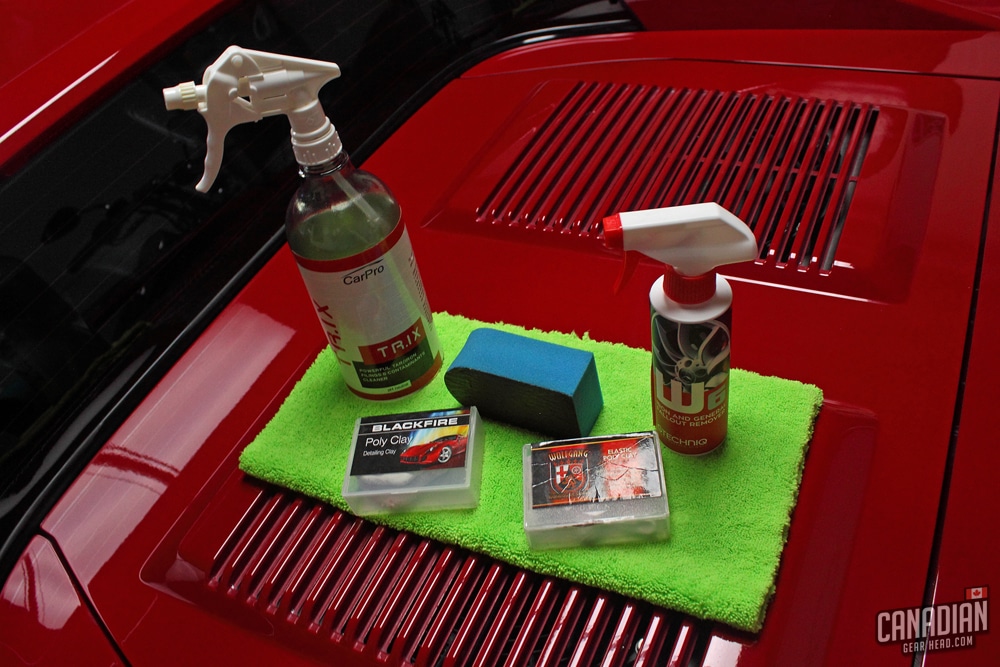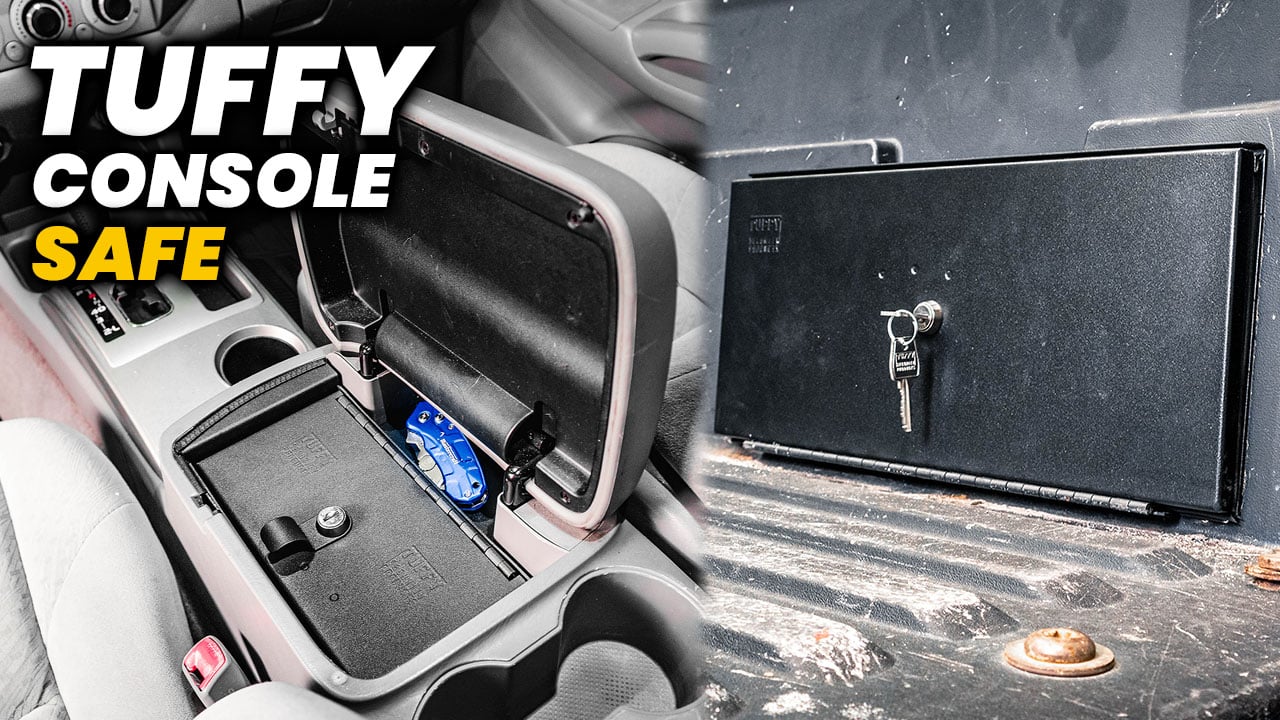Iron and fallout removers provide a rewarding experience when detailing your car. If you aren’t familiar, you spray them on the surface and if it comes into contact with any iron, it’ll change color (typically red or purple) as it dwells and runs off. The question is, how often should we be using them?
Much like a clay bar, you should only use an iron remover when you need to. It shouldn’t be included in your regular wash routine. Once or twice a year is fine, or when heavy decontamination is required (such as before applying a ceramic coating).
When you should use an iron remover
The way your car is treated will determine how often you need to use an iron remover. If it’s parked near a railway often or has brake pads that throw out a lot of dust, you’ll need to use it more regularly.
For a normal, well cared for car, you shouldn’t need to do any type of contamination (iron remover or clay bar) very often. Washing your vehicle regularly will keep contaminants from building up in the first place so you won’t need to worry about it.
One scenario where you’ll want to use an iron remover is before applying a ceramic coating. In this case, the paint needs to be as clean as possible which warrants taking a few extra steps.
Using an iron remover will ensure that there are no more hidden contaminants stuck to the paint, even after using a clay bar. If you spray it on and it doesn’t change color before running off, you know that your surface is perfectly clean.
This is important because ceramic coatings need a clean and decontaminated surface in order to bond to the paint properly. Skipping this will likely result in the ceramic coating not lasting as long as it’s supposed to or not performing properly. For more on ceramic coatings and what to do when they are causing trouble, check out this post:
An iron remover shouldn’t cause any damage to your paint if you overuse it (make sure to follow the directions on the bottle though). It can degrade a wax or sealant though so keep that in mind if you’ve applied one recently. Ceramic coatings can withstand an iron remover much more – in fact it’s often a great way to bring back any lost water beading on a ceramic coated car.
The biggest downside to using an iron remover too often is simply the cost. Compared to other detailing products, an iron remover is fairly expensive. You also go through quite a bit of it every time you use it as well. A 16 oz bottle won’t last you very long.
Is iron remover necessary?
An iron and fallout remover is necessary if you want to be sure the surface of your paint is perfectly clean. So yes, in situations like the one mentioned above, it’s necessary. It isn’t needed often though, especially if it’s already been done recently.
Choosing not to use an iron remover isn’t the end of the world if you just want your car clean and shiny. Unless your car is white, you likely won’t see or feel those contaminants on your paint.
Your car’s paint has pores just like your skin does. Over time, metal particles like brake dust or rail dust can imbed themselves into those pores. You can scrub and scrub with a wash mitt all you want but they aren’t going to come off. This is why we use clay bars on our cars. The sticky surface grabs onto the head of the contaminant and pulls it back off the paint.
There are times where contamination is dug in deeper into the pores where a clay bar can’t really grab it well. This is where an iron remover comes in. Instead of physically pulling the contaminants off the surface, it will chemically dissolve it. A spray-on iron remover is the only way to do this.
How does iron remover work?
Products like Iron-X and Gtechniq W6 remove ferrous (containing iron) contaminants. In comparison, a clay bar will remove the ferrous contaminants it’s able to grab onto, as well as nonferrous ones like paint overspray, tree sap, and tar.
The product is sprayed onto the paint during the washing step, allowed to dwell for 3-5 minutes, then sprayed off with water. If there is any iron contamination present on the paint, the chemical will cause it to turn red or purple during that dwell time.
The active ingredient in most iron and fallout removers is ammonium-thioglycolate. It speeds up the process of oxidation when it comes into contact with ferrous metals. That allows them to be pulled off of the panel so they can be rinsed away.
Ammonium-thioglycolate is what makes the product turn color. It’s also what makes all of these products smell horrid. Be warned, an iron remover will probably be the worst smelling product in your detailing arsenal.
Related questions
Should you use iron remover or clay first?
You can use these products in any order you want, although many people prefer to use the iron remover first. The reasoning behind this is that the iron remover can do a lot of the job without you having to touch or wipe the paint.
Any time you’re able to avoid touching the paint means you’ll have less chance of creating scratches. Clay bars are known to mar the surface so this can be an important factor when dealing with a heavily contaminated vehicle.
Another reason to use the iron remover first is to extend the life of your clay bar. Anything it removes beforehand will save the clay bar from having to do that work.
Should you use iron remover before or after washing?
This comes down to personal preference but what matters most is that you rinse the vehicle down thoroughly afterward. You don’t want to let an iron remover dry on your paint to avoid any possible staining.
Some people will go through the entire wash process, dry the car off, then use an iron remover. This is because they don’t want any standing water left on the surface to dilute the iron remover, making it less effective.
Others will actually spray it on a completely dirty car before washing it for a similar reason – to avoid the product being diluted.
Perhaps the most common way to use an iron remover is after washing but before drying the vehicle off. This is quicker and still seems to be effective in most cases. It’s up to you to decide which method you like best, but again, make sure to rinse it thoroughly afterward.
Can you use iron remover on wheels?
You can use iron remover on painted wheels without any problems. The clear coat on your wheels is no different than the clear coat on your car’s body. Using it on chrome or bare metal could cause trouble though so make sure to do your research first.
There is a misconception that iron removers are the same as wheel cleaners because of the color-changing bleeding effect that some of them share. This isn’t the case though. A wheel cleaner will also be able to break down dirt, oil, and grease. An iron remover strictly removes iron – that’s it. So don’t expect your neglected wheels to come up perfectly clean by just using an iron remover by itself.

Tim is the creator of Canadian Gearhead. His experience with auto detailing and working for Toyota shows through all of the articles posted here. He runs the Canadian Gearhead site and YouTube channel full-time now and currently owns a 2007 4runner, 2006 Tacoma, and 1991 MR2. Read more about Tim:






Leave a Reply